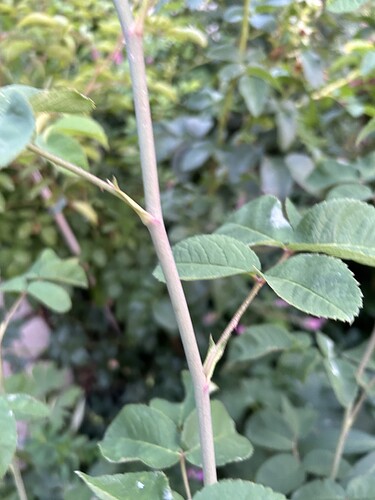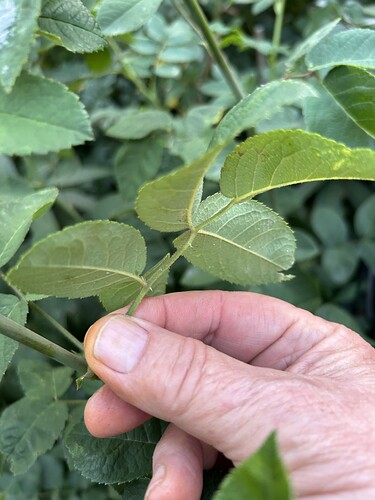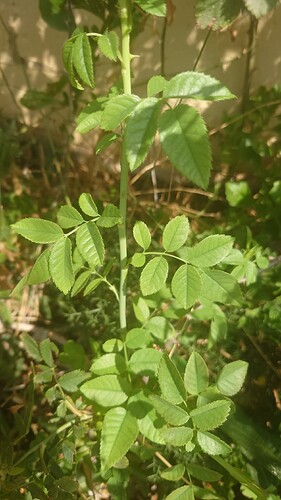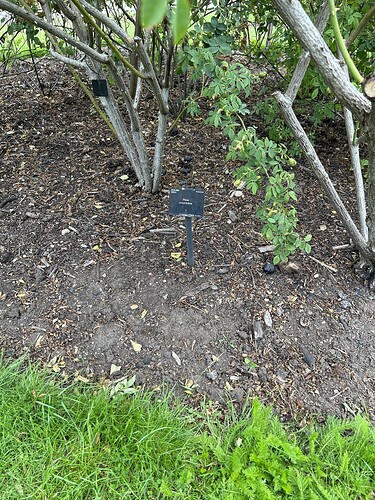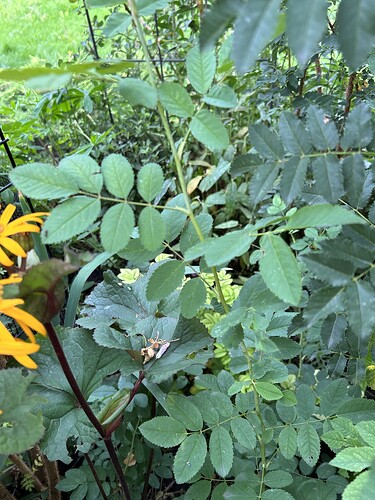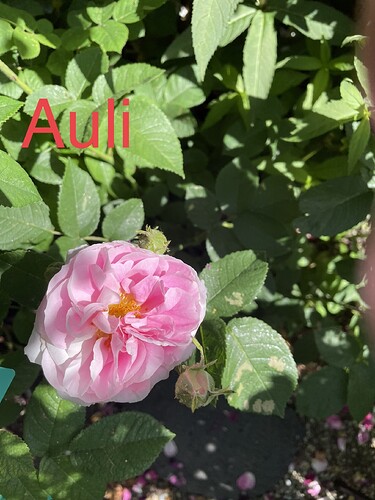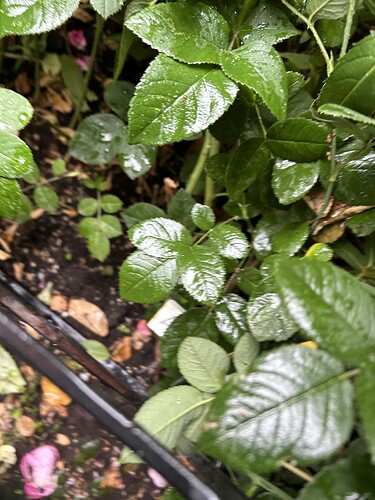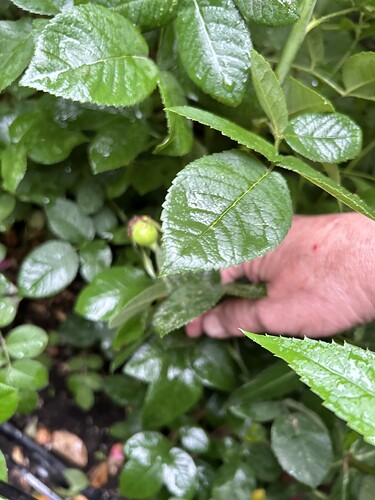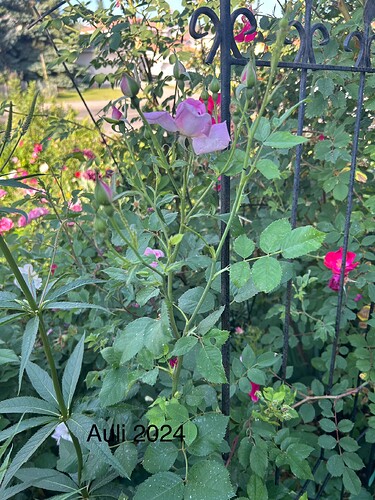Hi Hannu
Txs for Finnish rose society data.
An important link for people to save if interested in the Finnish and Nordic roses. Google translator use to work.
I had checked site, and vendor’s when screening Nordic and Scandinavian roses for import candidates.
A couple of question and first one related to canes vs the data.
1.)
Do you know whether Auli canes are thornless?
I can not see any canes in photos.
From site and after calyx note … “The thorns are small and hook-like with bristles.”
None of these on my canes for this years regeneration. However leaves are all five leafed, with two thorns or if preferred terminology, “bristles” on “leaf main rib”
2.)
Are Pirjo’s Auli seed parent and pollen parent information / identities available ?
I took a wild guess she might of used R. blanda “Herttoniemi” with a gallica to get thornless canes.
If l read your past note right, you had mentioned in your work you got it to cross both ways.
One of my Auli blooms from last year.
“Update hour later”
Its alive, it is Auli and its 99% thornless … and my eyesight still good. Maybe Finnish rose society will award Pirjo a gold medal.
How proved ?
Braved going down deep into the crown area where Auli tag and where thornless canes originate to convince myself that least “ l “ know l am not observation mad.
One new thornless cane erupted just below and from existing winter survivor pruned cane stub. Pays to pay attention to how you prune.
Found one normal bristle, or if prefer thorn, at base of the new canes (3).
Canes are “thornlessly” better than some of my thornless roses varieties - at least on my example.
Zipping off a number of cuttings for striking and growing over winter - thornless trait too good to be true to ignore potential use. And five leaved leaflets - not seen that before on my thornless roses - can’t remember Zeffy’s leaf count or what if any of the Gallica hybrids l tested had it (20 years ago).
It actually bloomed this year, one bloom only complete with fresh green hip about 8 inches off ground at crown area. This is where l would expect on a tender Gallica to find a bloom - on any surviving viable short length remains of last year’s canes.
It only blooms once, and on last years cane grow - same with Merveille who had heavy die back in year 2 (sailed through year 1 winter with protection) - and both were protected. Hoping they will show more resilience over time with protection like Empress Josephine has (3 foot canes survive and bloom - lately over 3 winters.
Hip into germination works with fingers crossed it does and an o.p… Hip looks exactly like last years crosses.
This was the start of a good damp foggy day.
Better photo of prickles, hip and blood perils of cross crown examination today.
